When coding classes for kids were first mentioned to me, I thought, “Why?” My generation is likely the last that remembers a time before computers. While I value the ease of using computers and technology, I’m also a tad old-fashioned in my love for reading a good old paperback book and writing with pen and paper. I rebelled against the idea of children learning programming. Or, if they did want to learn it, they could do it later—in university, perhaps.
Over the last few years, my perspective has changed a bit. It started when my husband signed Sunshine and Lily up for a little coding program at our local library. They loved it. They wanted to do more. We let them use Scratch (a coding website for kids) at home and attend more library classes. They took an online class in HTML and building websites. And then I began chatting with Smita from Whizara about semi-private lessons for them.
Over the last two weeks, as I’ve listened in to their live, instructor-led coding lessons, I’ve had a chance to think about what they’re learning. And I believe that what they’ve learned goes beyond the Python projects for kids they did during these lessons. Here’s why I think coding classes for kids are worth considering.
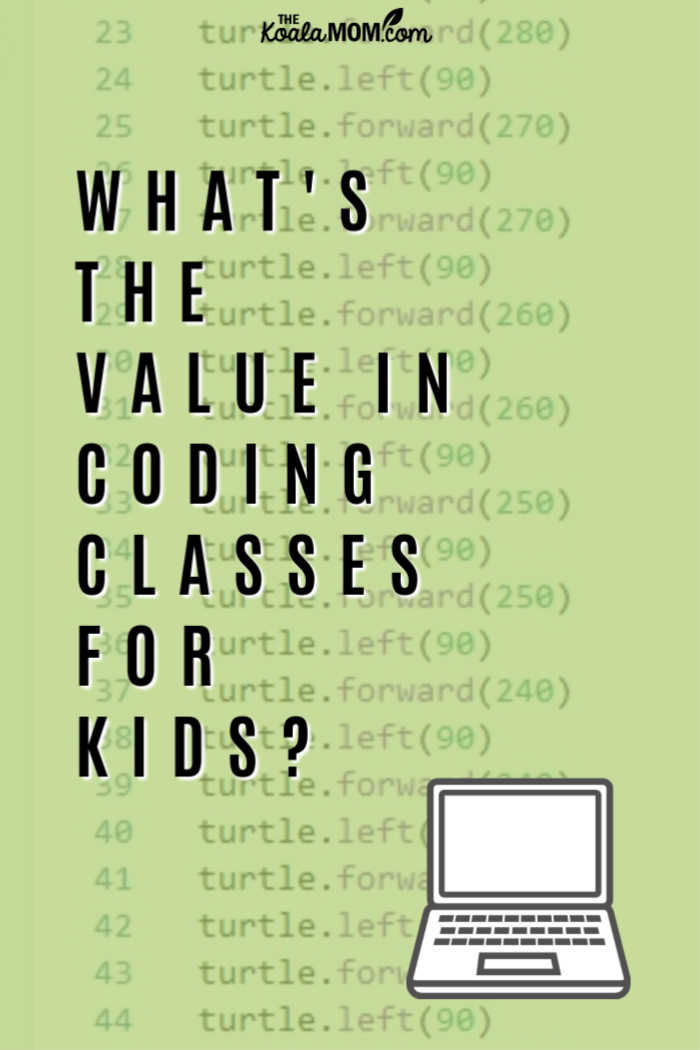
I received compensation for this post; all opinions expressed are my own.
More about Whizara
First, let me explain more about the girls’ online coding classes. As homeschoolers, we often use online classes to supplement our textbook, at-home learning. Online classes allow the girls to learn subjects I can’t teaching them (like Python or Scratch programming for kids).
Whizara taps into computer science grads, teachers and university students to provide instructor-led live virtual interactive and hands-on coding classes for K-12 students at schools and at home. Founder Smita Shrivastava has two decades of experience working at Silicon Valley technology companies. She is passionate about computer science education and started Whizara with the goal of enabling wide reach of computer science education among K-12 students.
I chatted with Smita via email about the girls’ past coding experience and what classes would be best for them. She recommended that they try an Introduction Python Programming, as this was a good place to build on their Scratch coding experience. The Python projects for kids in this course teach fundamental concepts of programming that can be applied to any programming language. It was very different than the “building blocks” of Scratch, but the girls really enjoyed it.
5 Reasons to Try Coding Classes for Kids
1. Coding proves spelling matters
In an era of auto-correct and spell-checkers, it can be tempting to feel like spelling doesn’t really matter. Aside from poor marks on a spelling test, kids can certainly feel like spelling isn’t important. Who cares about i before e except after c other than grammar nerds (like me)?
Well, in coding, spelling matters. Spell something wrong and your code fails. There’s consequences to i before e! While I constantly correct the girls’ spelling and attempt to tell them why it matters, it was rather fun to watch them misspell a word in their code and then have the instructor point it out because their code wasn’t working.
With Whizara’s online coding classes for kids, the instructor was able to help watch the girls spelling and correct it as needed. Sometimes, as a homeschool mom, it’s handy to have another teacher reinforcing things I’m telling them…
Coding thus teaches an attention to details and rules that is useful in other areas of learning.
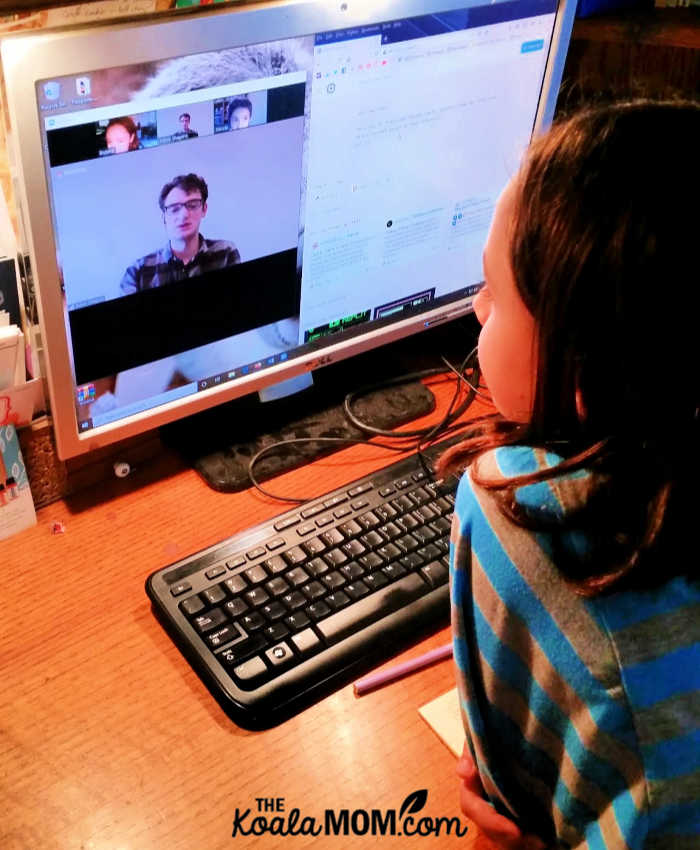
2. Coding is related to math
As the girls learned Python, I could also see how coding is closely connected to math. Again, math in a textbook can often feel disconnected from the real world. I remember, as a student, grumbling about why I had to learn certain math concepts because I’d never need to use them. And maybe I didn’t need to use them, but they still taught me a way of thinking that has been valuable.
As the girls learned about functions, this-then-that, and other rules for Python, I thought about math. Coding can give kids a real-world application of their math skills. Both math and coding require a logical way of thinking, with one side of the equation affecting the other side. There’s a clear right-and-wrong that makes it easy to check for mistakes.
Around here, math is not a favourite subject. Having an instructor patiently walk the girls through this portion of coding was very helpful. And maybe they didn’t realize that they were learning math, but I’m sure when they get to functions in math, they’ll think back to this coding lesson and a lightbulb will go off. I love it when learning intersects like that.
When children learn programming, they also learn math and logic skills.
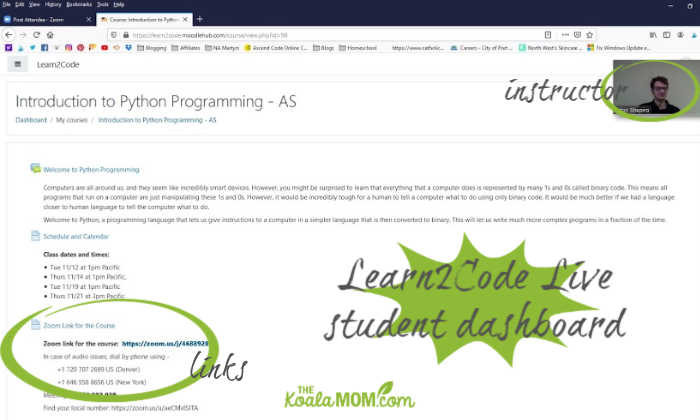
3. Coding teaches problem-solving
When the girls have written all their code and their online “turtle” didn’t go the direction they thought… some problem-solving is required. This might mean going over the code to check for spelling mistakes or errors in their functions. Maybe they can look at what the “turtle” did do, compared to what they thought they told it to do, to find just where in their code they might have made a mistake.
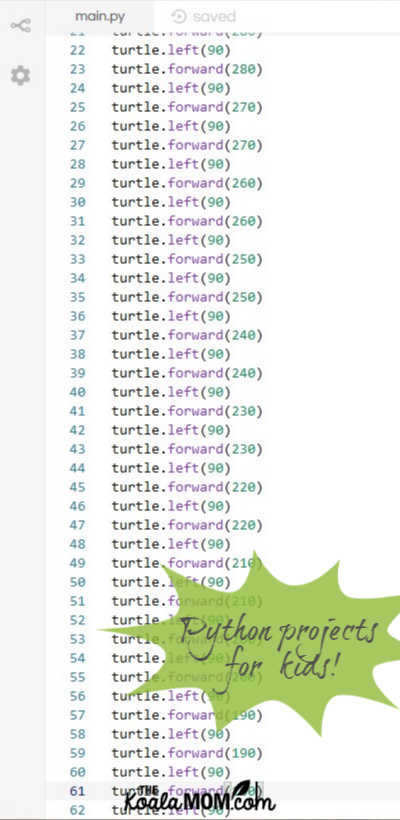 Once children learn basic programming, problem-solving comes in again as they work to do more. For example, “I’ve just written a code that directs my turtle to draw a star. How could I make that turtle draw a square instead?” And, of course, that just builds into bigger projects and problems. Much computer coding has come out of solving a problem.
Once children learn basic programming, problem-solving comes in again as they work to do more. For example, “I’ve just written a code that directs my turtle to draw a star. How could I make that turtle draw a square instead?” And, of course, that just builds into bigger projects and problems. Much computer coding has come out of solving a problem.
I liked the fact that Sunshine and Lily were doing the lesson together, as they were able to help each other with their code. It was cute to see them sharing screens or just running over to the other computer to help with something that one of them had figured out and the other hadn’t yet—whether that was logging in or writing Python. Problem-solving often works better when you can collaborate with someone and share your ideas.
There were also more concrete problem-solving skills required in just setting up for our lesson. I’d originally thought Lily could work on our main computer while Sunshine used a laptop in her room. However, the laptop was running slowly, causing Sunshine frustration. And Lily’s computer didn’t have a camera, so she switched to my computer. Then I realized that the girls didn’t need a camera (the instructor needed to see their screens, not necessarily their faces). So Sunshine moved to the main computer. Both girls wore headsets to prevent any echoes or looping.
Coding thus encourages kids to problem solve, whether for tech problems or coding problems.
4. Coding encourages communication
Coding classes for kids teach them to communicate with a computer. Sunshine and Lily have an idea in their heads that they want to create. How do they tell the computer to make it a reality? Computer language, aka Python, HTML, CSS, etc. And while coding may use English words, the girls have to learn what these words mean in certain situations to the computer, or which symbols go with the words to make the actions happen.
Improving communication skills never hurts. My dad always encouraged my interest in writing, because so much of our communication happens in written form. In a similar way, coding teaches the girls to think about what they want to communicate and how to communicate it. They have to translate their ideas and thoughts into a form that the computer will recognize and make into reality.
When children learn programming, they also learn communication skills.
5. Coding makes us consider the process
Often, as consumers, we don’t think about what goes into the things we consume. Much of what we want is available with the click of a button or the swipe of a credit card, and we don’t have to think about the effort that went into getting it from Point A to our home. Some knowledge of the process can help deepen appreciation for the different things that we use.
For example, the girls expect food to appear on the table every evening. They don’t see the time I spend looking up recipes, ordering groceries, prepping food, or cooking. When Sunshine tries to make a meal by herself, and it takes twice as long as it would take me (after I’ve told her she can’t make half the recipes she wants to try because we haven’t got the ingredients), she realizes just what goes into putting food on the table.
Similarly, when children learn programming, they also learn what’s behind many of the websites they use. If it takes this many lines of code to make their “turtle” do a loop-de-loop, imagine how many lines of codes it makes for a different to happen at the push of a button. Of course, we don’t need to know how something works to use it (think about driving a car!), but sometimes that knowledge is handy or useful (think about checking your oil).
Even if they never go on to become computer programmers, I think it’s useful for the girls to know what goes on when they open a website.
6. Coding fosters creativity
Kids are creative. Sunshine likes crocheting and sewing. Lily enjoys writing and drawing. Coding gives them another way to express their creativity. It can combine other aspects of their interests (for example, Sunshine had fun adding her own music to one of her Scratch projects). It doesn’t require any supplies (beyond a computer) and it doesn’t make a mess.
One of the best parts of watching the girls learn about coding, whether they are using Scratch or Python, is seeing what they create. With a little guidance from their instructor, and sometimes some ideas from others, they’ve created some pretty neat projects. And that process of imagination and trying new things is really fun to watch.
Check out Coding Classes for Kids
If you think your child would enjoy taking coding classes, check out Whizara. They have a variety of classes for kids from Kindergarten to Grade 12, including Scratch (for K-3), Python and HTML/CSS (Grade 5+), JAVA and C++ programming (Grade 7+), and more. You can set up private or semi-private classes like I did (talk to your fellow homeschoolers about a group class—your child will have fun learning with their friends!).
Are you interested in coding classes for kids? Would you have your children learn programming?

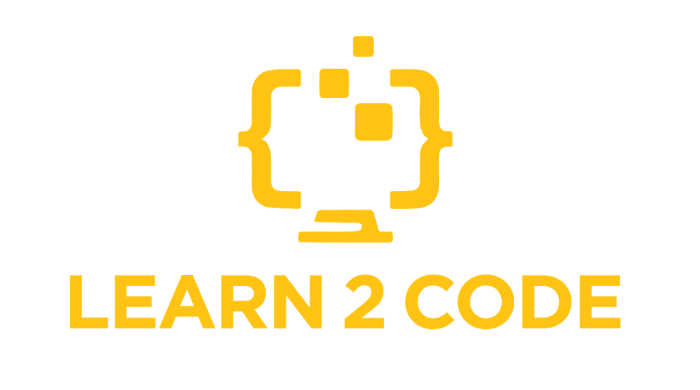
No Responses Yet